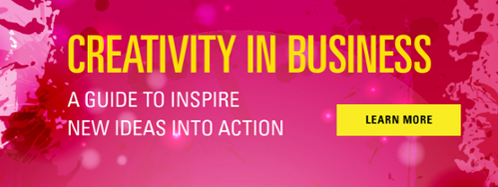
Looks matter. Whether you're seeking a life partner, trying to upgrade your paycheck or running for president, how you present yourself is more than just window dressing. Within moments of meeting someone, our unconcious mind starts gathering data—however limited—and making educated guesses about what this person's overall appearance is telling us: if they're trustworthy, intelligent, competent and likeable.
We run the same screens when we're looking at documents, too—websites, presentations, memos and email. How you visually present your information is key when most viewers are only giving you an 8-second window to grab their attention. That's only enough time to read about 30 words, provided your viewer's attention isn't being pulled in any other direction.
A strong visual identity for your brand is a good foundation that can guide designers and non-designers alike in their creations. And if you have a talented graphic designer at the ready, by all means, get and stay in their good graces.
But there are plenty of routine communications that just need to look good and get out into the world, without putting them through a dedicated design process. For those times when you're going it alone, use the following principles to make sure your docs are in great shape.
Start with the Whole Picture
As communicators, we trade in ideas. But what seems inspiring and game changing when it first pops into your head can seem dull and nonsensical when spelled out on the page. Don't fall victim to the first draft fallacy—the idea that your first attempt at articulating a strategy or approach is going to be exactly what you end up presenting, either in print, online or in person.
It's important to get all of the information down but you have to put some structure to it as well. We like the Challenge, Solution, Result framework for tackling marketing and PR strategies and expected outcomes. The five-step research organization (Summary, Background, Findings, Conclusions and Recommendations) is another popular one for walking people through your thinking.
There are a million ways to organize your information. Think about the reasons why you're creating the document, what your audience wants to hear and move your info into the appropriate spot.
Tackle One Topic at a Time
The human brain can't do two things at once, no matter how much we want to believe in multitasking. Having multiple topics or even points coexisting in one section can make it difficult for other people to grasp what you're trying to communicate. Once you've organized your information, see if you can simplify it further into a handful of buckets that will form the basis of your document—whether subheads, slides or chapters. Speaking of which ...
Titles, Titles, Titles
Even the most straightforward image or graphic needs a descriptive title to let your audience know what kind of information they're about to receive. If your document is still primarily text, titles and subheads can help the reader navigate between topic changes and skim through without reading every word, letting them decide where they want to dive in.
But titles are more than just labels. Just like compelling headlines, they should pique the readers interest. Don't be coy but do use strong verbs and distinctive nouns to communicate what's to come.
Don't Choose Your Own Color Palette
Unless you're good at that kind of thing and you have a firm understanding of color theory. Using standard colors in new and unusual ways is a surefire way to give your viewer a splitting headache. Ideally, your brand has an approved color palette that you can work off of to create a cohesive look and feel. If that fails, you can always use a pre-set color palette through Word or PowerPoint to give your presentation some polish.
Less is More
You don't need to cram every available surface with SmartArt, graphs, text or pictures. White space, or negative space, helps draw greater attention to what's really important in your document, whether that's an eye-popping statistic or a killer headline. Heed Coco Chanel's advice: when it doubt, take one thing off (or move it to the next slide, page, etc.).
Research shows that people learn more from multimedia messages when they’re stripped of extra words, graphics, animation and sound. So resist the urge to load up on .gifs and focus instead of making one thing great.





Let’s Connect
Ready to build, grow, manage and protect your brand? Complete the form below to discuss how we can help.